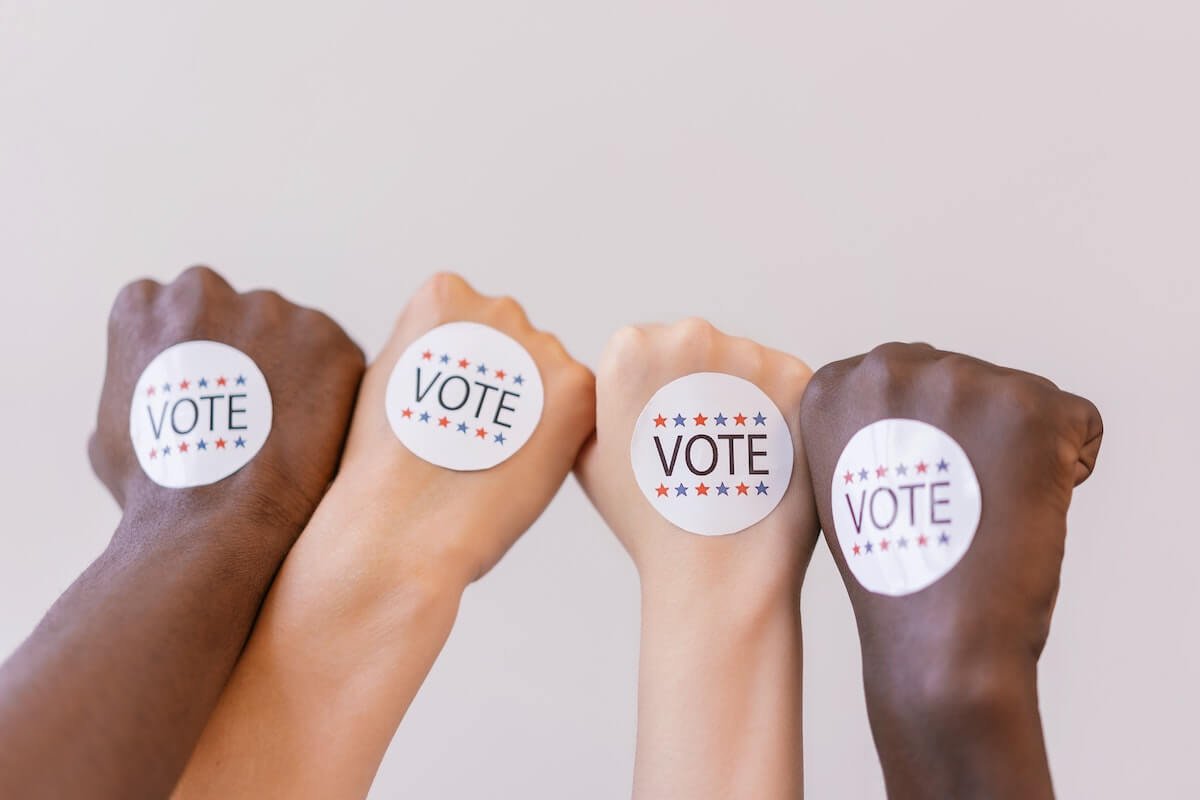'My Vote Won’t Matter' + 5 Voting Myths to Stop Believing
Have you ever talked to a friend or colleague about an upcoming election only to hear that they aren’t planning to vote? Perhaps they feel that neither candidate is worthwhile (a common discussion in the 2016 Presidential election). Or maybe they subscribe to the common misconception that a single vote doesn’t matter. After all, in 2016, Hillary Clinton won the popular vote by nearly three million votes, yet Donald Trump emerged the victor due to Electoral College wins in key battleground states.
However, many of these common myths and misconceptions about voting are long standing mistruths about a system that has been in place for decades. In the current era of social media, the internet, and widespread connectivity, this false information can be damaging to voter turnout for elections.
As you research your candidates and their corresponding platforms in preparation for the upcoming elections, make sure to educate yourself on voting best practices and your rights and duties as an American citizen.
Why is Voting Important?
The reasons why you should vote are endless. The United States operates under a democracy, meaning that the supreme power is vested to the people. It is the people who choose their representatives. At the state and local level, voters elect mayors, police chiefs, city council members, State Representatives and Senators. At the national level, every four years voters turn out to elect or, in some cases, re-elect their President.
Unlike countries that operate under a dictatorship, the people have a widespread say in public policies and their governing bodies. Casting your vote at the ballot box is giving your input on how your money is being spent—whether on local taxes or community projects—as well as policies that directly affect your everyday life, such as healthcare.
While each individual issue may not affect you directly, the candidate that you elect is responsible for advocating for and implementing all policies that directly affect their base and constituents. This means your vote, or lack of vote, can have widespread implications for other members of your community, especially minorities.
What is Voter Apathy?
Voter apathy is a term that refers to voters lack of interest in upcoming elections. Voter apathy can cause problems for any campaign, especially in the final weeks or days of an election cycle. Often, voter apathy is caused by two main issues: alienation and voter fatigue.
Voter Alienation
Voter alienation refers to when voters feel that they are being ignored by the government. Voters may feel rejected from the current political system. They may feel disenfranchised, powerless, unheard, or that the system does not serve them fairly. These voters become disillusioned and, as a result, are less likely to show up to the polls to vote. Those who feel alienated from voting often have a “Why does it matter?” mindset.
Voter Fatigue
Another cause of voter apathy is voter fatigue. In a world run by social media, many voters are constantly inundated by news, media, viral stories, and political campaign ads. This can lead to information overload. The danger of this level of voter fatigue can also be seen in low voter turnout or in protest votes, such as deliberately invalidating their ballot with write-ins or “none of the above” ballots.
Common Voting Myths + Misconceptions
Myth: My vote won’t matter
While it is true that one vote might not decide an entire election, that doesn’t meant that you shouldn’t cast your vote. Think about this: if a candidate does win by one vote, each person who voted for the victor can say that they were the deciding vote. It can also go the opposite way.
If everyone assumed that their votes did not matter, then the winner of the election is chosen not by popular vote or opinion, but by the remainder that showed up to the polls. This could represent a very small subset of the state’s population.
Even if you live in a state that has historically voted either Republican or Democrat, not all states operate under the Electoral College’s winner-takes-all approach. Both Maine and Nebraska split their state’s electoral votes using what is called the Congressional District Method.
Under this method, each state allocates two of its electoral votes to the winner of the popular vote and then one electoral vote to the popular vote in each Congressional district—two for Maine and three additional votes for Nebraska.
How Electoral Votes May Soon Change
The long-standing winner-takes-all Electoral College may soon be changing. Article II, Section 1 of the Constitution grants the states the power to divide their electoral votes as they see fit. As of July 2024, 17 states and the District of Columbia (Washington, D.C.) have passed legislation to change the way in which electoral votes will be divided.
Under the National Popular Vote Interstate Compact (NPVIC), the member states would award electoral votes to the candidate who wins the national popular vote, a shift from the state’s popular vote. This would ensure that the President of the United States is always elected by the popular vote, guaranteeing that every vote in every state would matter in every election.
However, the NPVIC would only go into effect if member states represented the 270 electoral college votes needed to win the election. As of 2024, the current number is 209, leaving 61 additional electoral votes needed to go into effect. While there are some that question the constitutionality of the compact, this could soon be the leading reason why you should vote in each election.
Myth: State and Local elections are not important
While the Presidential election may get the most press, the smaller, local elections are often the most important areas in which to cast your vote. Unlike the larger general election, local elections are decided by a razor-thin majority. This means that local elections are much more likely to be decided by individual voter turnout. Local elections also most directly impact you and your daily life.
This includes community parks, road maintenance, police, public health, and local schools. Educate yourself on local candidates as well as identifying your state’s voter registration deadlines and local polling locations to ensure that you show up to the polls to cast your vote.
Myth: I don’t register to vote because I don’t want to be selected for jury duty
While the selection process may vary from state to state, the voter registration list is not the only list used to select potential jurors. Additional examples of lists used to select jurors include: DMV records, home owner or rental records, tax returns, unemployment, or census.
Myth: The only way to vote is on Election Day
There are many options for voters to cast their vote in the election if they are unable to make it to the polls on Election Day.
Many states participate in early voting. This can range from several days to one month prior to the general election. (See your state’s guidelines on early voting here)
If you are unable to appear in person on Election Day (or your state does not allow early voting), you may qualify for an absentee ballot. While it is important to check your state’s specific rules on absentee voting, all states will mail a ballot to voters who require one. In Texas, voters can request an absentee ballot if: they are 65 years or older, disabled, unable to appear at the polls, or in jail.
Myth: Fewer young people are voting than ever
While traditionally the youth (18-24 year old) voter turnout has been much lower than other age groups, there is evidence to suggest that young adults are getting more actively engaged in elections.
According to US Census data, youth voters were the only age group to increase turnout in 2008. In 2018, voter turnout for 18-29 year olds was 36%, a 79% increase from voter turnout in 2014. While the younger vote is still comparatively lower than other age groups, this recent data is a positive upward trend that could factor in greatly in upcoming elections.
Women also continue to vote at higher rates than men, 55% to 52%, respectively. In 2018, voter turnout increased for many minority populations, including non-Hispanic Asians (a 49% increase), Hispanics (a 50% increase), and non-Hispanic black voters.
The 2020 presidential election broke the record for highest voter turnout in the 21st century, with an astounding 66.8% of eligible voters turning out to the polls, resulting in 154 million votes cast for both candidates. This astronomical number smashed the recent highest voting total of 137.5 million, set in 2016.
Myth: Mail-in ballots do not count
One of the myths about absentee voting is that the mail-in ballots do not count or are not counted unless the race is close. However, many states, including Washington, Oregon, and Colorado, vote completely by mail. Other states, such as Montana and Arizona offer a permanent vote-by-mail option for over 70 percent of the entire state’s population.
Confused about the difference between absentee voting and mail-in voting?
With COVID-19 precautions causing many states to change regulations surrounding voting, the two terms have been used interchangeably and have caused confusion amongst voters.
Mail-in Voting
Mail-in voting refers to all ballots that are sent through the mail. Mail-in options include universal vote-by-mail ballots—such as in Colorado—that are sent to all registered voters in the state. It could include absentee ballots.
Absentee voting
Absentee voting refers to a ballot sent through the mail because a person is unable to appear in person for either early voting or on Election Day. To be given an absentee ballot, a person must specifically request one.
The simple answer: All absentee ballots are mail-in votes, but not all mail-in votes are absentee ballots.
What about the statements that mail-in ballots can be easily forged or stolen? Is there widespread voter fraud? According to the Brennan Center, voter fraud, such as an ineligible voter casting a ballot, was exceedingly rare. In fact, their findings suggested it happened in approximately 0.0025 percent of all cast ballots. Equally as infrequent are voting issues, such as clerical errors, registration record errors, or “bad matching.”
Furthermore, the implementation of statewide electronic voter registration lists—part of the federal Help America Vote Act (HAVA)—has addressed many of the issues regarding potential voting fraud, including duplicate ballots, incorrect addresses, or impersonation. These electronic lists are able to coordinate with state agencies to verify and remove any ineligible voters.
While there are many more myths surrounding the reason that many do not vote, it should not deter you from becoming an informed voter and educating yourself on the issues that matter most to you. Widespread change only starts when individuals address these issues and call for reform from their government. So, if you think that your vote doesn’t count, think again.









But consent doesn’t always have to be associated with heavy topics. In fact, we should be consenting to every single part of our lives—from what we buy at the grocery store to what medications we take. Everyone should understand what consent means.